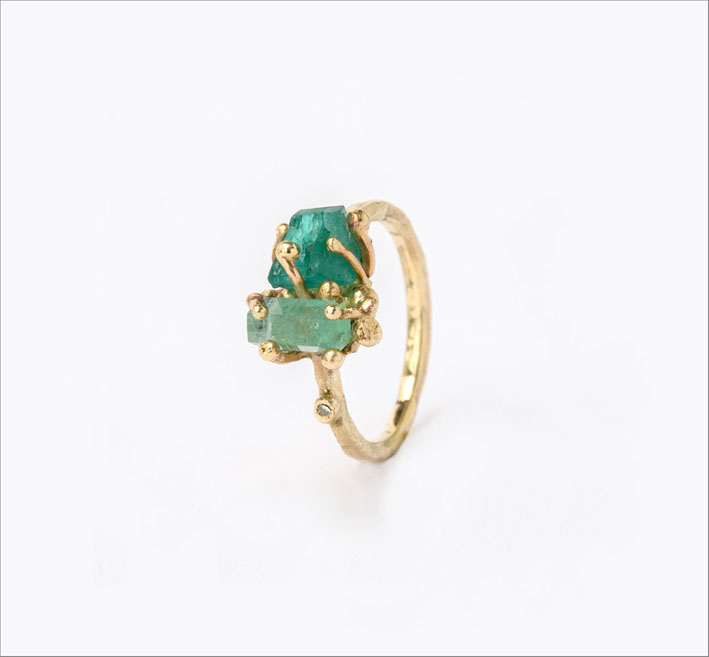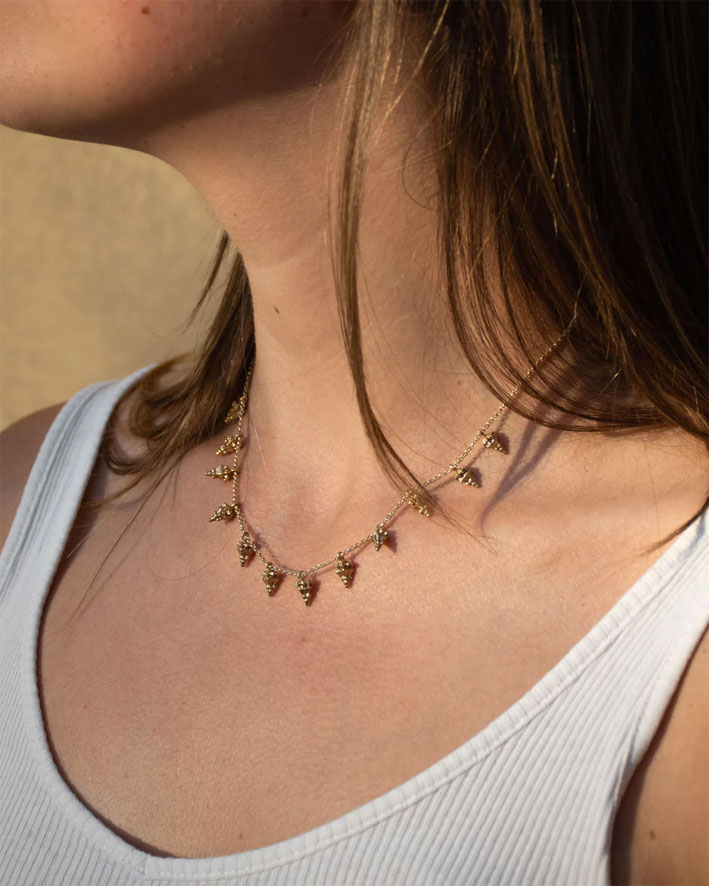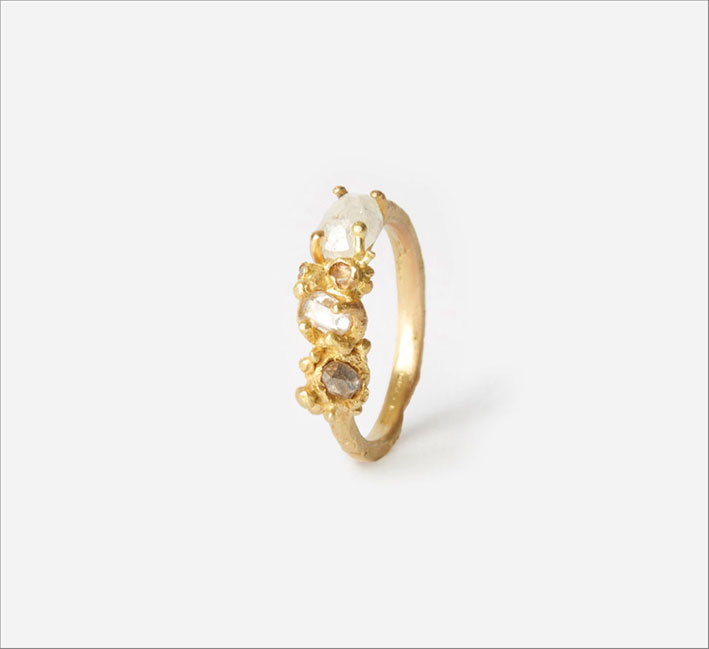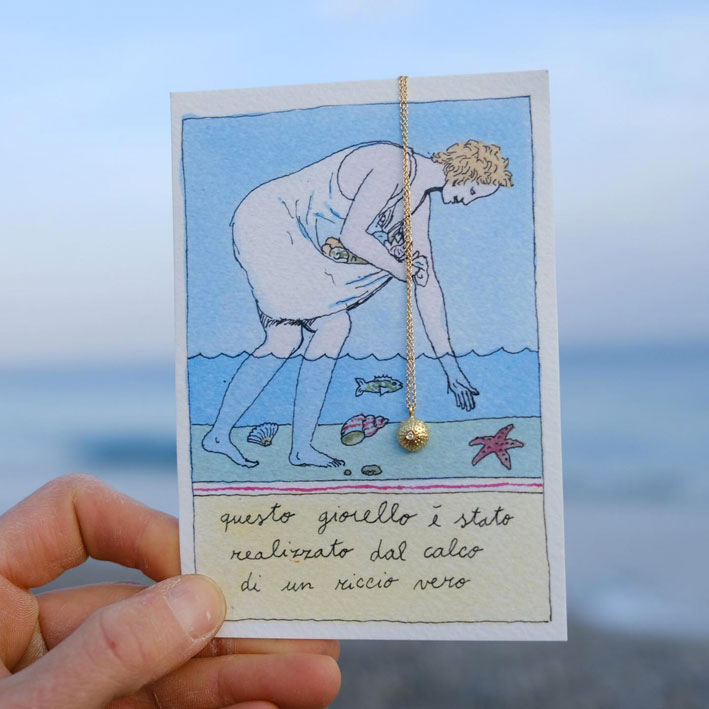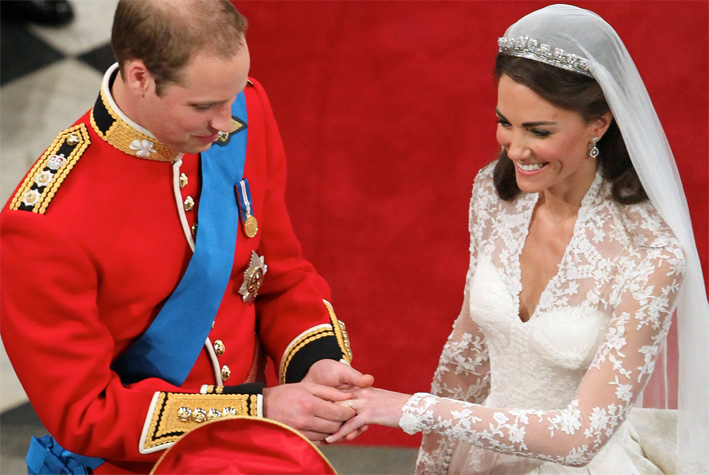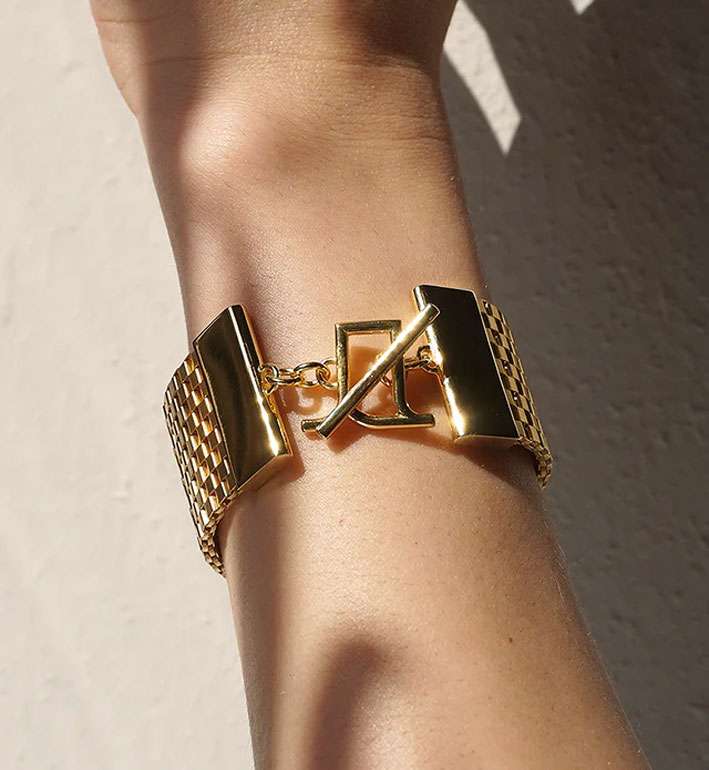Handmade in Italy. Or rather, in Milan, the city of fashion, business and technology. Yet Giulia Tamburini has chosen to create jewelry with an ancient spirit and technique that paradoxically seems in contrast with the city’s speed, dominated by business. Her creations are made according to the rules of craftsmanship, from design to processing with traditional tools, and with the necessary time. She is not the only one to follow this philosophy, but she is one of the few. Above all, her work stands out from that of brands that produce identical jewelry, in identical factories.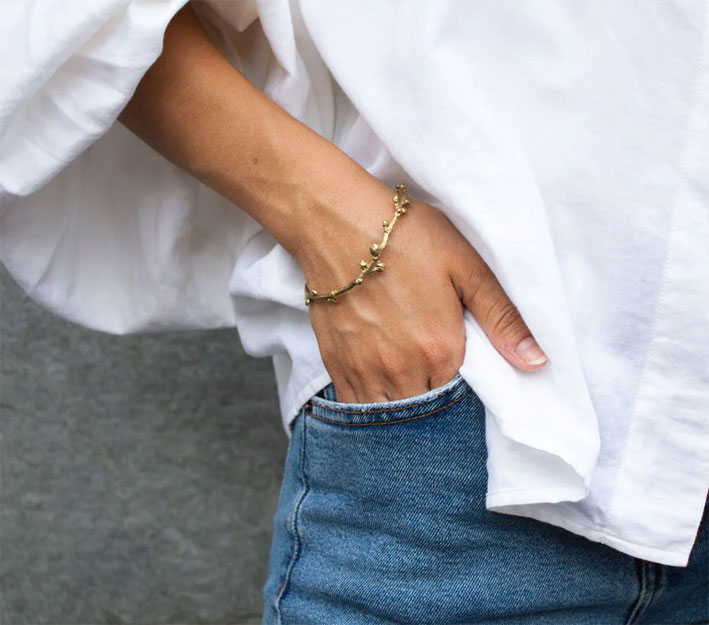
The designer’s CV indicates that she was born in Milan in 1984, graduated in modern literature, but in 2010 she was struck by the idea of becoming a jewelry designer-creator. She left the lights of Milan to move to Florence, where she learned the processing techniques at the School of Goldsmith Arts, also specializing in metal engraving and setting. She then put the teachings into practice by working as a goldsmith for Anaconda Gioielli, a rather well-known jewelry store in Milan.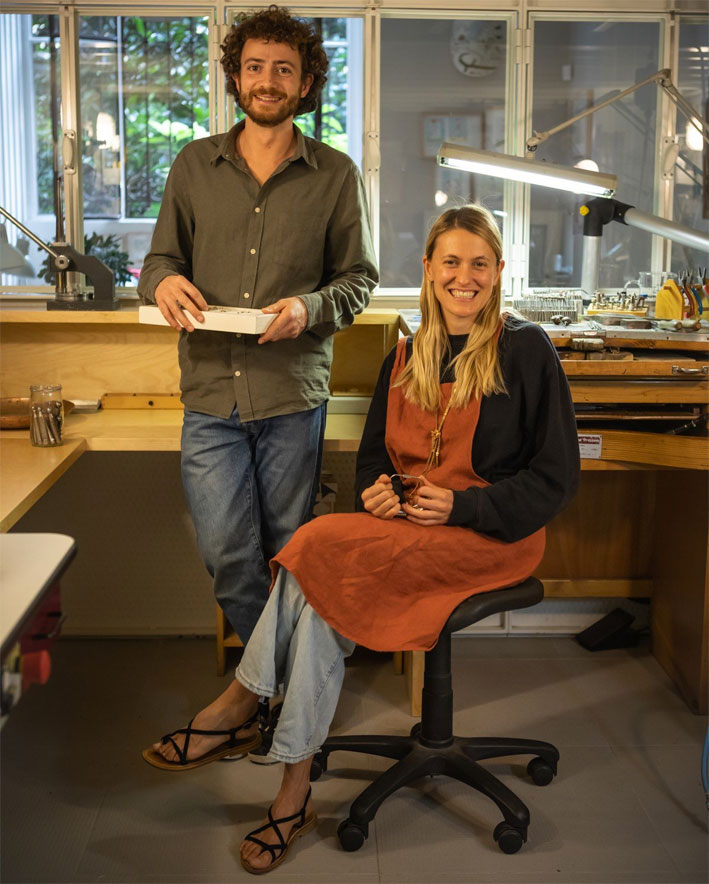
In 2010, the leap with the creation of the Giulia Tamburini brand. Now the designer works in a laboratory-atelier in Porta Venezia, a central area, where the jewels are displayed with the frame of the illustrations created by Ettore Tripodi, an artist who is also the author of a series of colored postcards to match the jewels. The jewel-postcards tell stories that add narrative value to necklaces, bracelets or rings. Giulia Tamburini’s jewels are made of 9-karat gold, or silver and bronze. The designer also uses gems: old-cut diamonds (i.e. with fewer facets), or semi-precious stones such as tourmaline, which offers a wide variety of colors.
